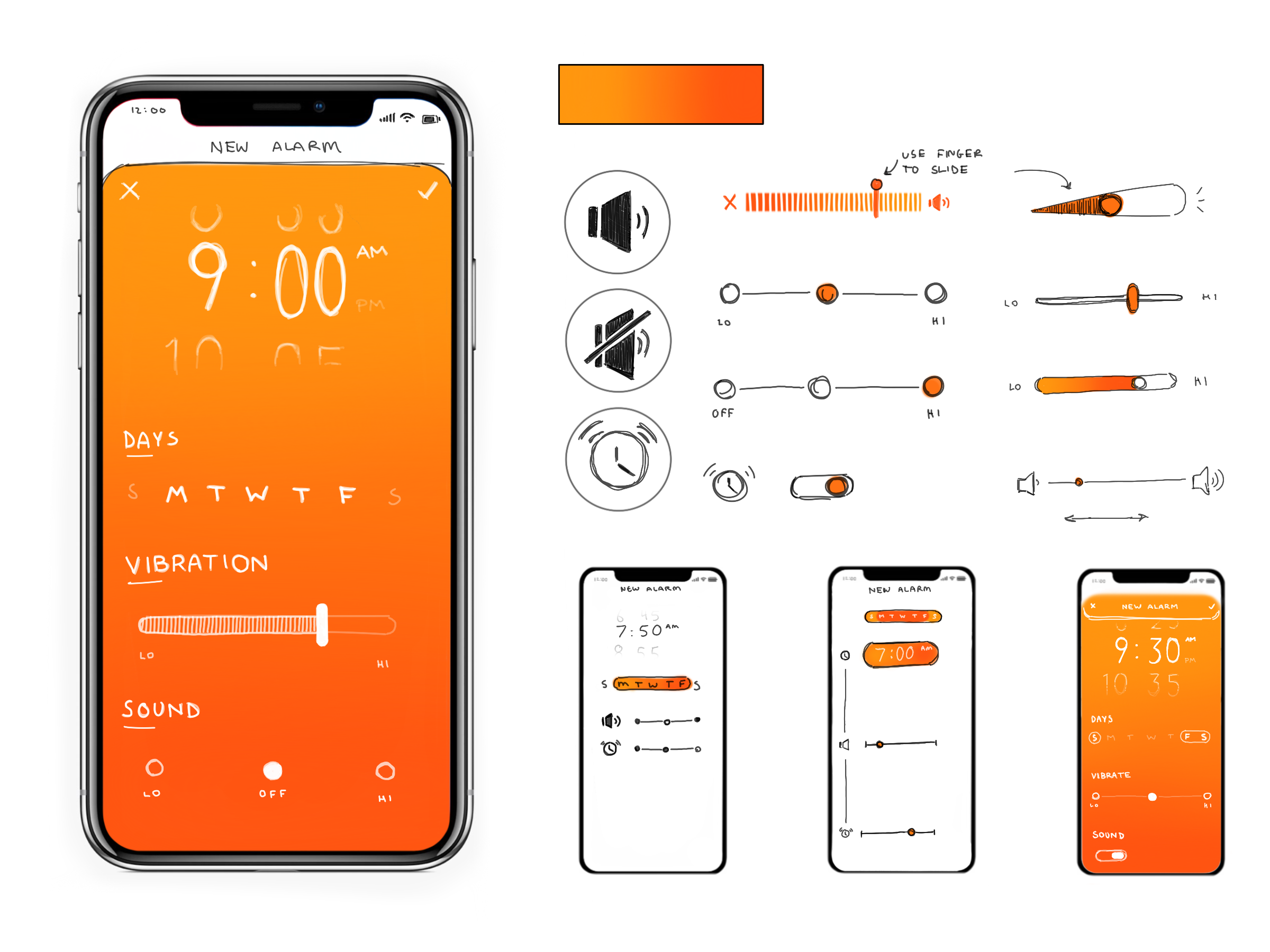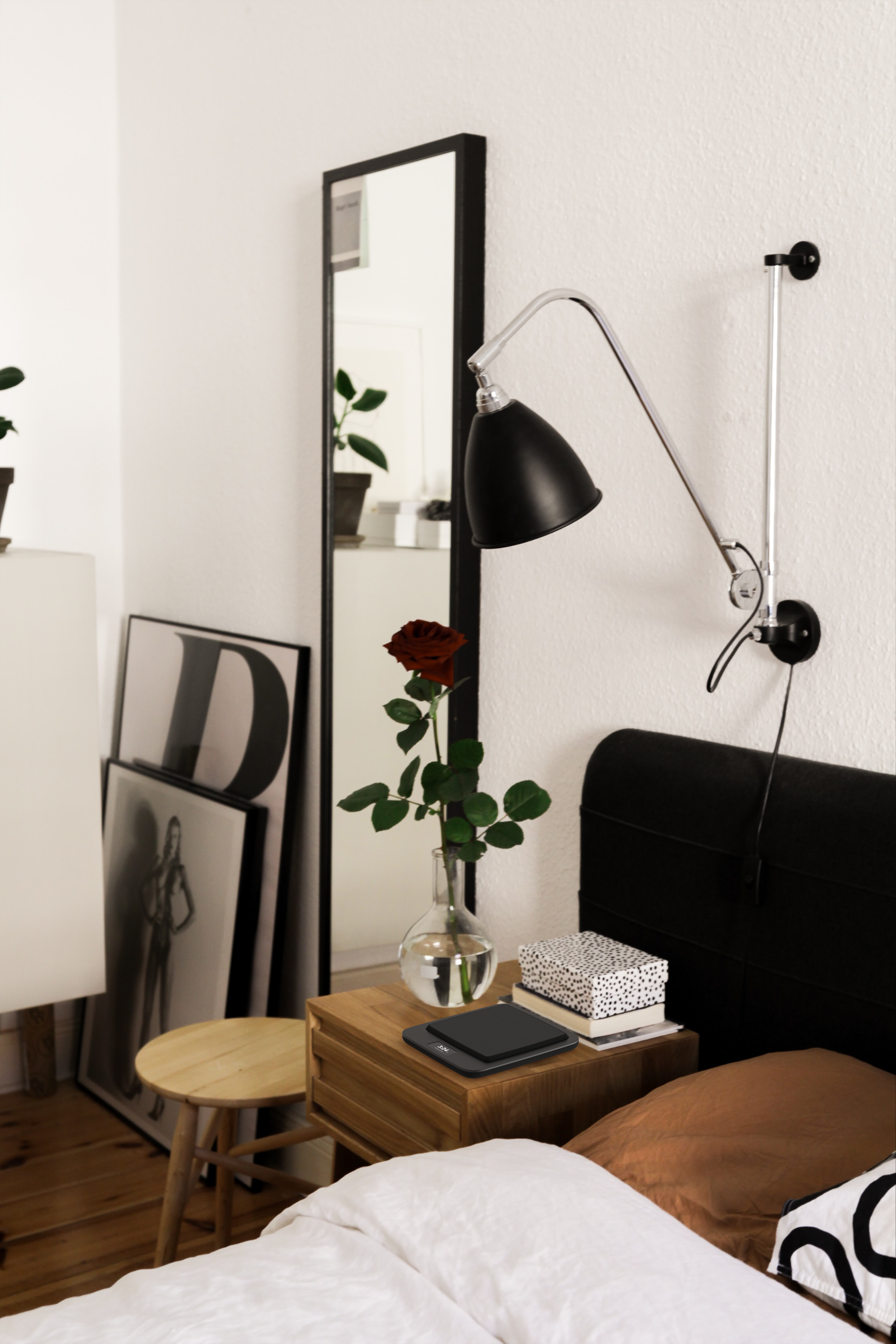
INVI: a tactile alarm clock.
INVI is an alarm clock designed for individuals with varying degrees of hearing loss and for people who want a tactile wake-up experience.
38.2 Million
14.3% of all Americans aged 12 years or older have hearing loss.
-
Hearing Loss
Is the third most prevalent chronic health condition facing seniors.
-
1 in 7
People have hearing loss in at least one ear - that’s 48 million people.
Speaking with Potential Users
-

Ash is completely deaf in both ears. They use their cellphone’s vibrate function as an alarm, which doesn’t always wake them up. They dislike other “bed shaker” type alarms because those wake up their partner.
-

Jim has high frequency hearing loss in both of his ears. He describes his hearing loss as “terribly debilitating” as it does not allow him to hear alarms or sirens. He currently relies on his wife - who has full hearing - to wake him, but he worries about what he will do when she passes.
Design Goals
-
Tactile
Incorporate a variety of vibrate intensity options so users are able to adjust the strength to their preference and wake-up needs. Ensure the vibration is centralized as to not wake up more than the single user. Users like Ash will benefit from a customizable vibrate function depending on their needs.
-
Discrete
Current tactile alarm clocks look very sterile and clunky. Ensure this design is something familiar and simple, and that users can travel with it.
-
Customizable
Considering not just non-hearing individuals, but individuals with some hearing is paramount to making a functional and customizable device. Allowing some sound frequencies to be selected will be helpful for users like Jim.
Concept exploration began with the layout of a spectrum ranging from devices meant to be used with the user’s pillow to devices reminiscent of typical tabletop alarm clocks and smart devices.
Concept Spectrum
-

What if the pillow itself was the alarm? How might we charge, transport, and wash this?
-

For particulary restless sleepers who move around quite a bit, perhaps a pillow-sized mat would be best.
-

Could we incorporate soft-touch into a mat-like device? How might we charge, clean, and adjust this?
-

What if there was a charging dock for a vibrating puck? Would we need an interface on the dock itself?
-

How might we create a connected device, including a charging base, vibrating stimulus, and an app?
Tabletop Solution
A small tabletop device direction was chosen for its portability and familiarity. Additionally, this category has potential for fitting in well with a user’s existing décor and other devices.
Form Finding
A combination of paper prototypes and quick CAD helped me dial in the form and proportions.
I concepted an app that connected the user’s phone to their alarm clock in much the same way a Google Home is connected: via Wi-Fi. The app guides the user through the set-up process step-by-step, ensuring all users are able to accurately set up their wake alarm and remotely manage alarms.


The final concept consists of a charging base, the vibrating stimulus, and a companion app.












